Close your eyes and imagine a perfect space: aligned furniture, harmonious colors, and an aesthetic that seems straight from a magazine. Now, open your eyes and ask how this space makes you feel.
Traditional design creates beautiful and functional areas, but sensory design goes further. It invites your senses to participate, transforms light into an embrace, aroma into memory, and textures into dialogue with touch. It's not about replacing what we already know but challenging what we think a space can be. Are you ready to rethink the way you design and plan your projects?
In a world where the human experience is increasingly valued, interior design has evolved to deeply connect with the occupants of spaces. This is where sensorial design conquers a unique space: it is an approach that transcends the visual and transforms spaces into complete and unforgettable experiences. In this article, we will explore how the 5 senses can be combined in harmony to create commercial and residential spaces that we see, feel, hear, smell, and, ultimately, enjoy.
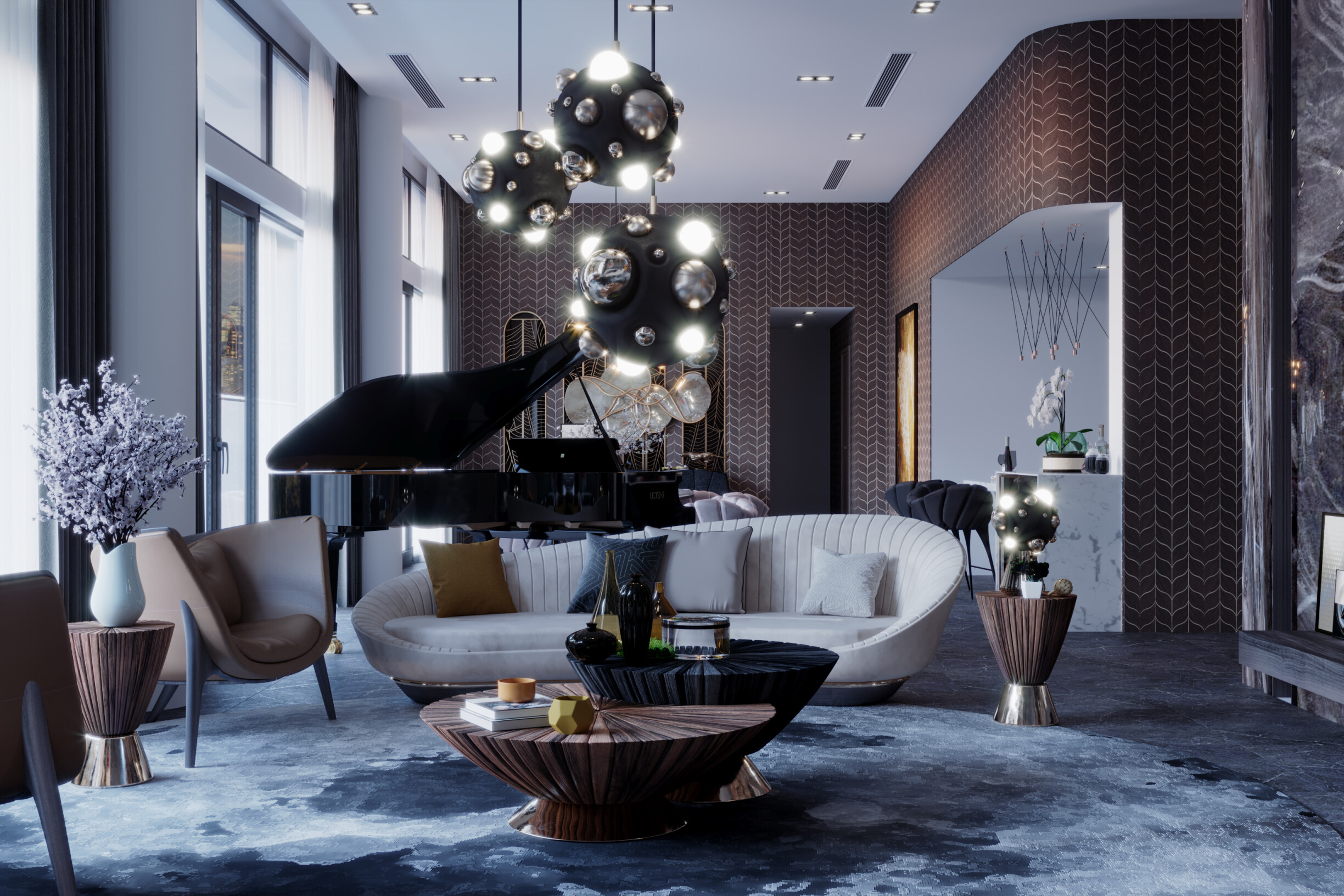
"The best interiors make your heart pound.”
Tony Fornabaio, founder of his New York City-based design company
Sensory design challenges the limits of traditional design, proposing that a space should be more than visually pleasing. It must be felt in all its fullness. Inspired by the premise that areas can profoundly influence people's well-being and emotional connection, sensory design uses the five senses—sight, hearing, smell, taste, and touch—to create complete, immersive, and memorable experiences.
While traditional design focuses on the aesthetic and functional organization of spaces, sensorial design transcends these barriers by integrating elements that awaken emotions and stimulate perceptions, such as:
Sound: soft music or natural sounds that create a peaceful atmosphere;
Textures: materials such as wood or soft fabrics that invite the touch;
Aromas: delicate fragrances that evoke memories or promote relaxation.
Scientific studies prove that sensory stimuli have a direct impact on our perceptions and our emotional state. Simply touching a soft surface can generate feelings of calm, while soothing music can reduce stress levels.
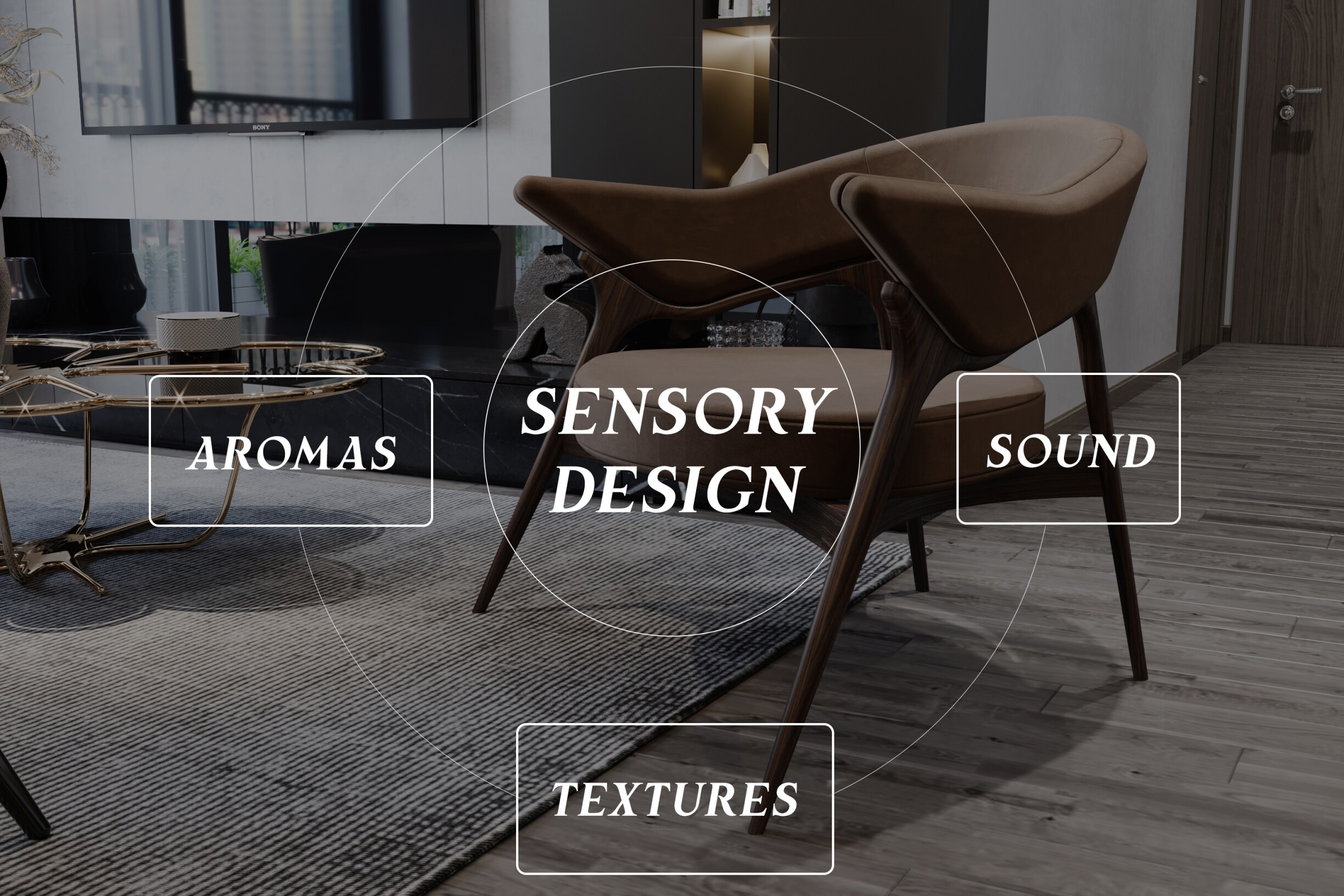
Why is sensory design relevant?
In an increasingly fast-paced world dominated by digital stimuli, physical spaces must provide a refuge, an experience of reconnection with the present moment. This is where sensory design becomes essential. It allows you to create spaces that welcome, comfort, and surprise, creating lasting memories.
Whether in a commercial space, where the customer experience is a priority, or in a residential area, where comfort and well-being are fundamental, sensorial design redefines the relationship between people and the places they inhabit.
It's not about replacing traditional design but expanding its ability to connect humans to the area. By adding sensory layers, design becomes a powerful tool for creating spaces that are not just pleasing to the eye but are fully felt and experienced.
Sensory design has a profound impact on the behavior, well-being, and experience of those who occupy the space. Applying this concept can bring significant advantages to both residential and commercial spaces, creating more human, welcoming, and efficient spaces.
Improves well-being and reduces stress: creating spaces that positively stimulate the senses helps reduce stress levels and promote a sense of calm;
Stimulates creativity and productivity: in work areas, such as offices or commercial spaces, sensorial design has the power to stimulate creativity and increase productivity;
Creates an emotional and memorable experience: sensory design can deeply connect the occupants and the space. An area that activates all the senses tends to be more memorable, creating lasting memories;
Values spaces and increases customer satisfaction: in the commercial context, spaces that stimulate the senses can lead to a richer and more satisfying customer experience, which can translate into greater loyalty and increased sales;
Enhances accessibility and inclusion: sensory design can also create more inclusive and accessible spaces for everyone, regardless of their sensory needs.
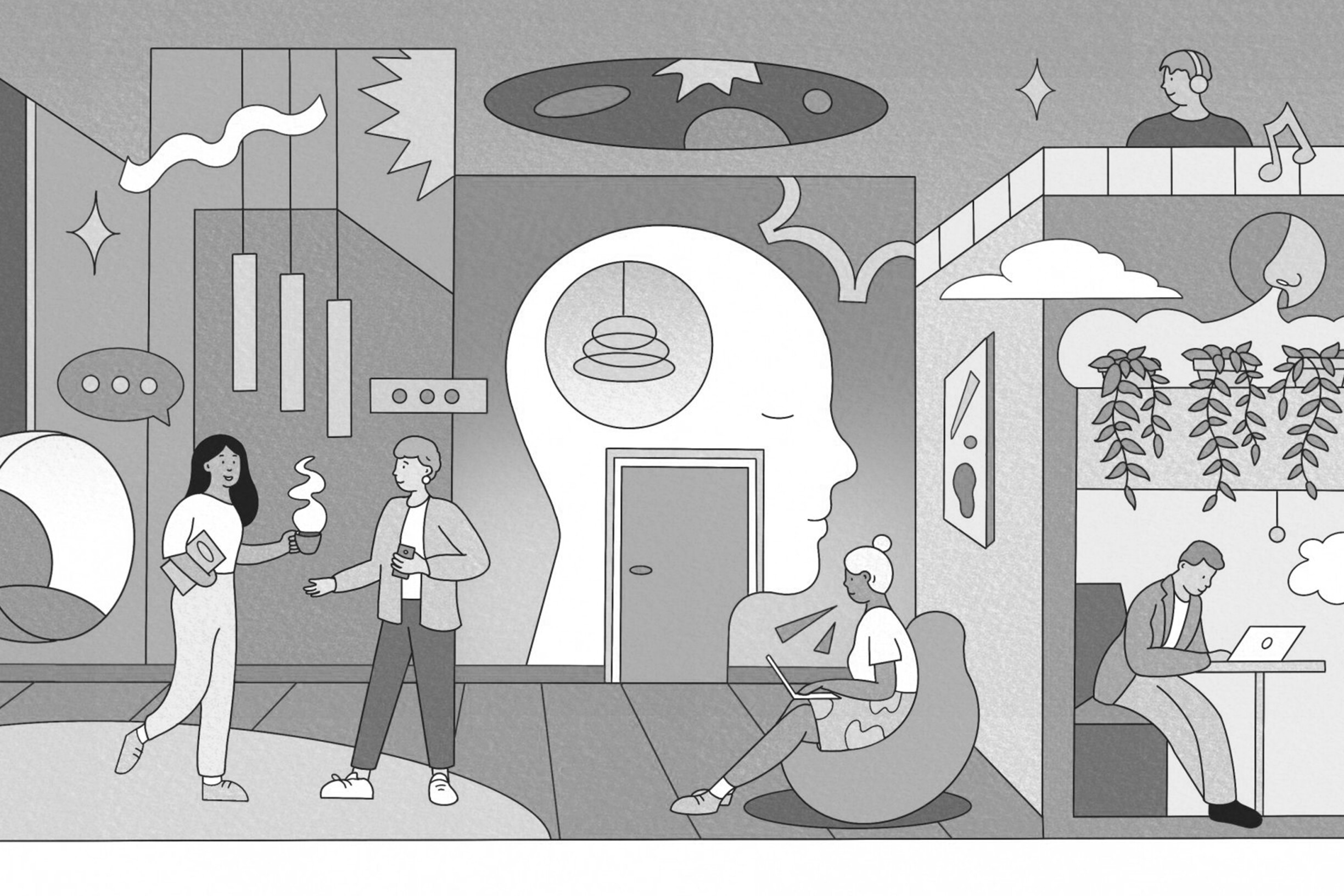
Sensory design is a holistic experience that engages each of the five senses to transform a space into a multifaceted area where all senses play their role. Each element—whether visual, sound, tactile, olfactory, or even gustatory—is carefully selected to evoke an emotional response and provide an immersive sensory experience.
Vision is undoubtedly the most explored in interior design, but sensory design goes beyond the visual. In this context, colors, shapes, and lighting beautify and transmit emotions.
As for colors, soft tones (like light blue or mint green) can evoke tranquility, while vibrant colors, like orange or red, can energize the room.
Controlled lighting allows you to change the space, creating a feeling of welcome or stimulating activity. Here, we cannot forget the role of natural light in a sensory space, which promotes psychological well-being.
The harmony between design elements, namely the arrangement of furniture and accessories, creates visual balance, facilitates circulation, and creates a feeling of space.
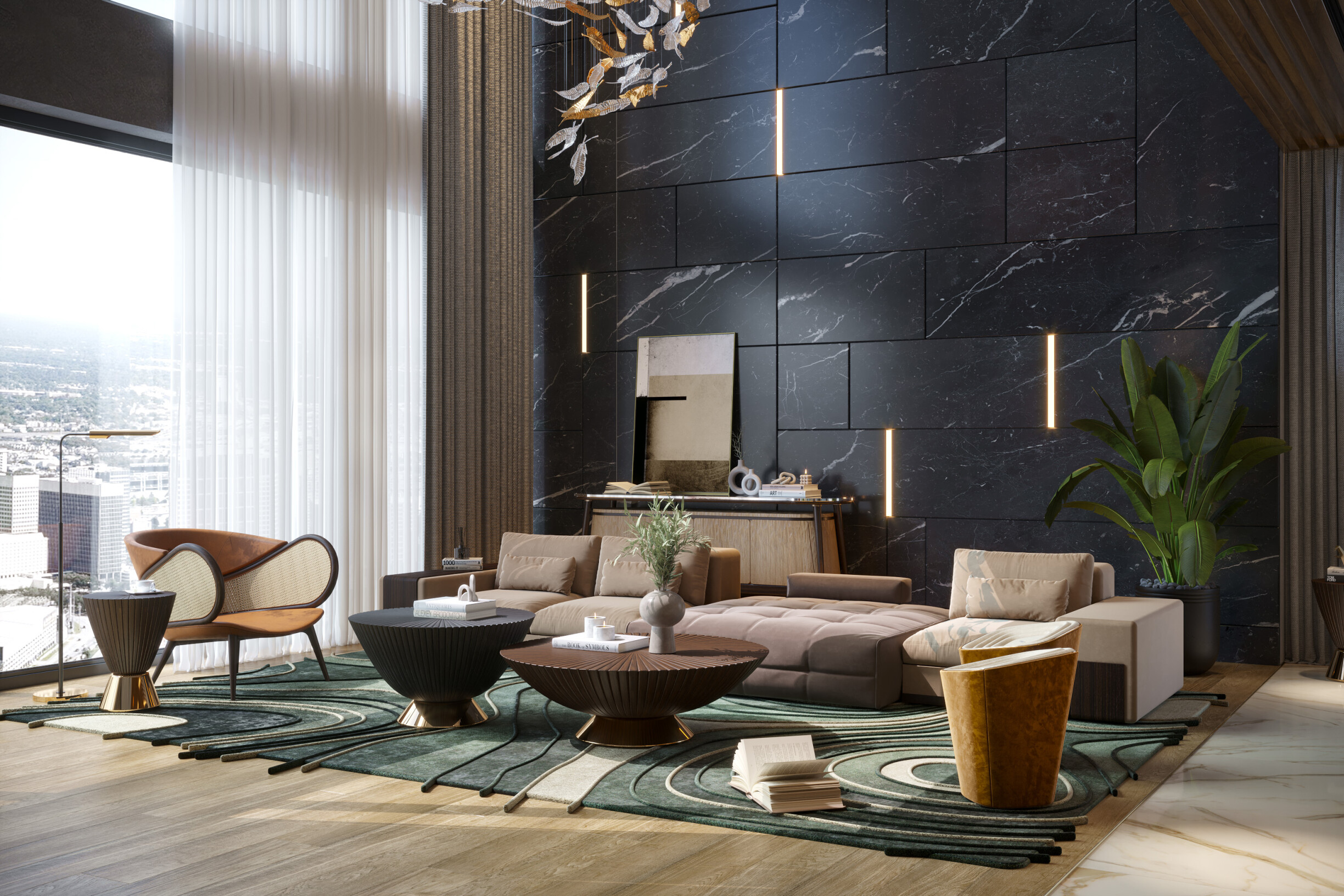
Sound plays a crucial role in creating a complete sensory experience. Sound can be both a conscious stimulus and an almost imperceptible presence that affects our emotional state.
Soothing sounds, like instrumental music or natural sounds, can transform a quiet space into a welcoming, relaxing place. The design can also include elements that control acoustics, such as rugs and curtains, helping to reduce noise and improve acoustic comfort.
It is also important to remember that in some spaces, the absence of sound is relevant and can be equally powerful, providing a feeling of peace and balance.
Smell is one of the most powerful senses for evoking emotions and memories. In sensory design, the use of fragrances can transform the atmosphere. Relaxing scents like lavender or chamomile can create a peaceful room, perfect for rest areas or bedrooms. In contrast, energizing scents, such as citrus or fresh herbs, help increase energy and focus. The best way to enhance this sense of interior design is through simple tools such as diffusers and aromatic candles.
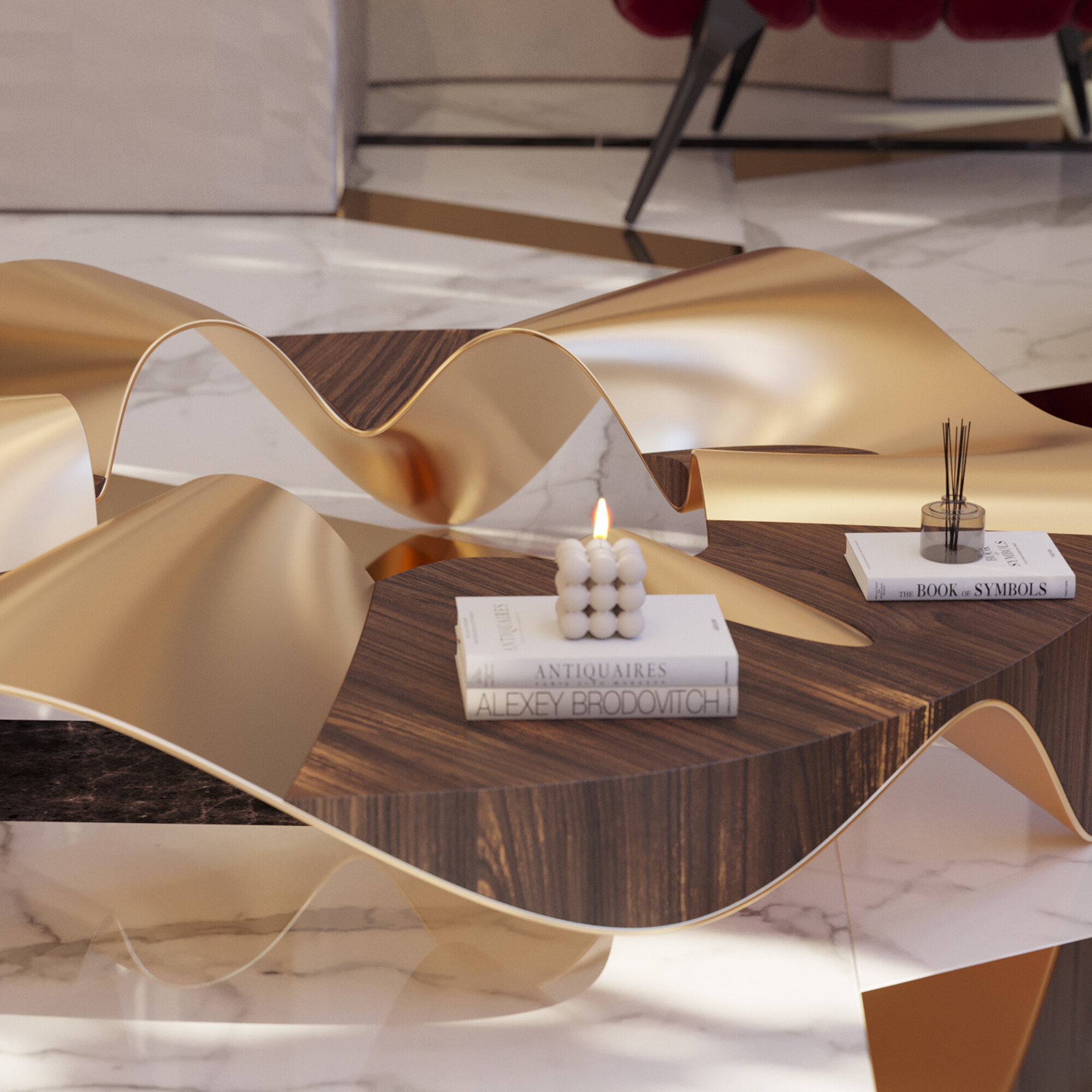
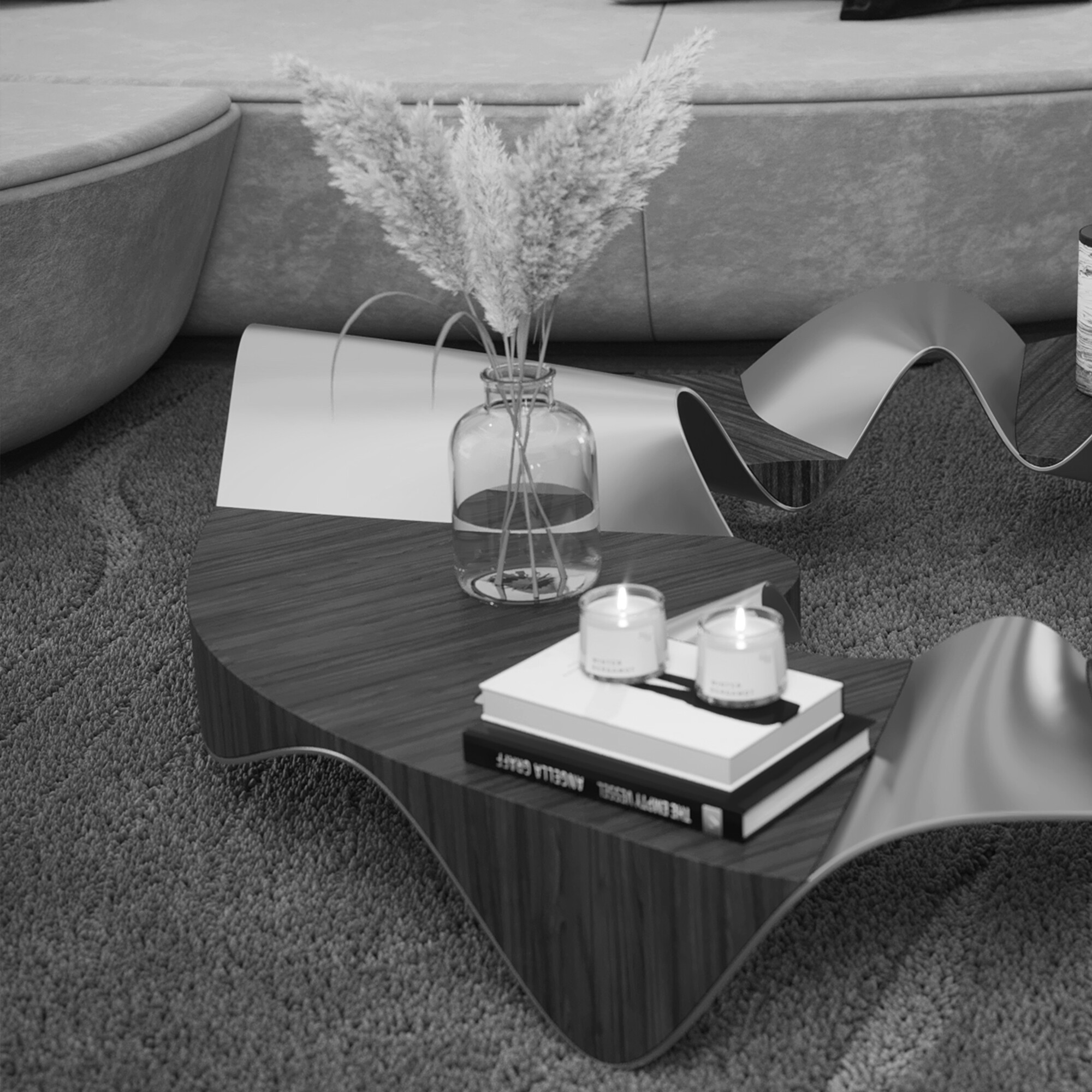
Textures play a central role in a space's sensory experience. The human touch is essential to creating a feeling of comfort and connection with the space.
You can opt for soft materials, such as velvet, cotton, or silk surfaces, that are inviting to the touch and provide warmth and luxurious aesthetics. Natural materials such as wood, marble, or wool can generate feelings of tranquility and connection with nature.
Different textures, like soft rugs, comfy pillows, and cozy sofas, can make a space more inviting and comfortable.
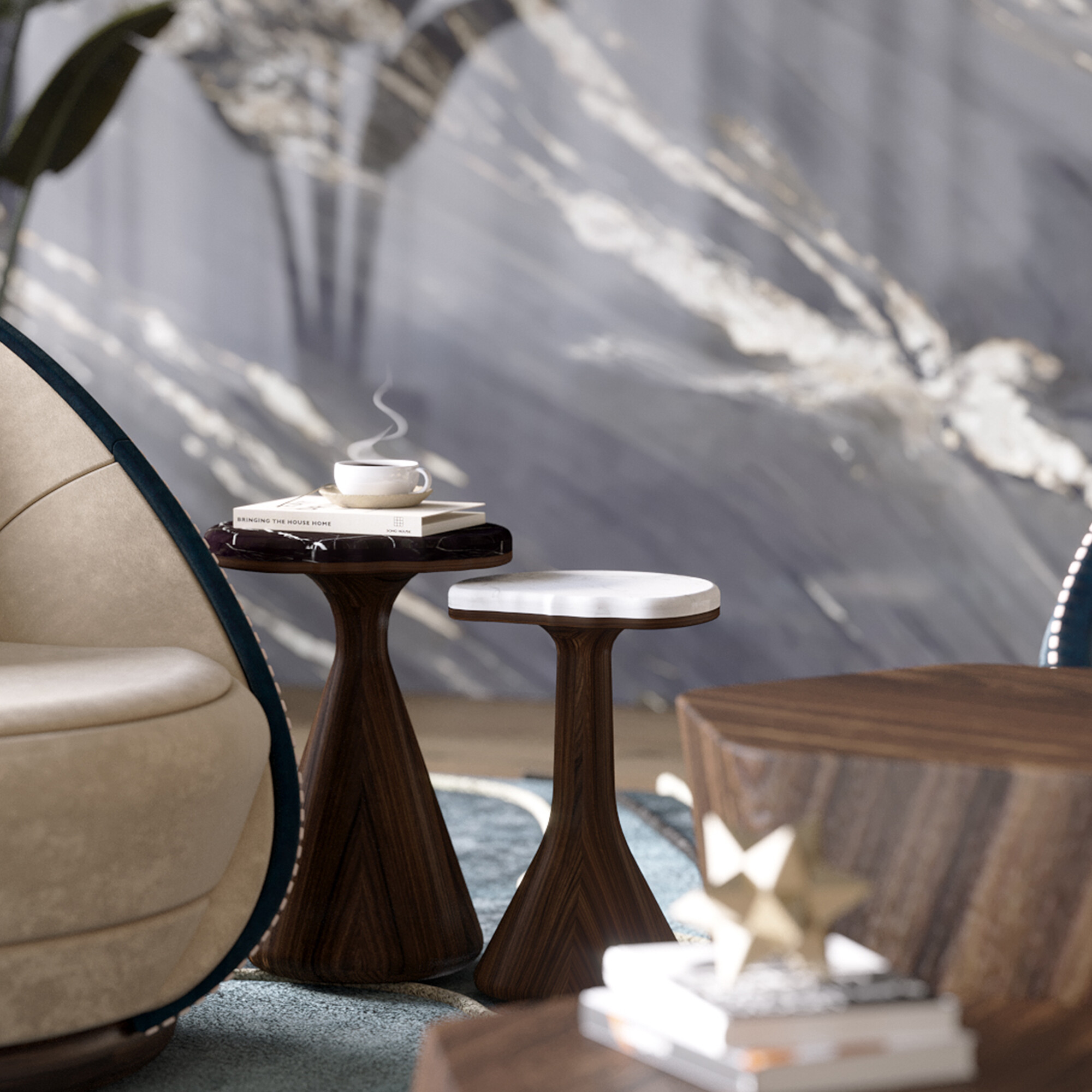
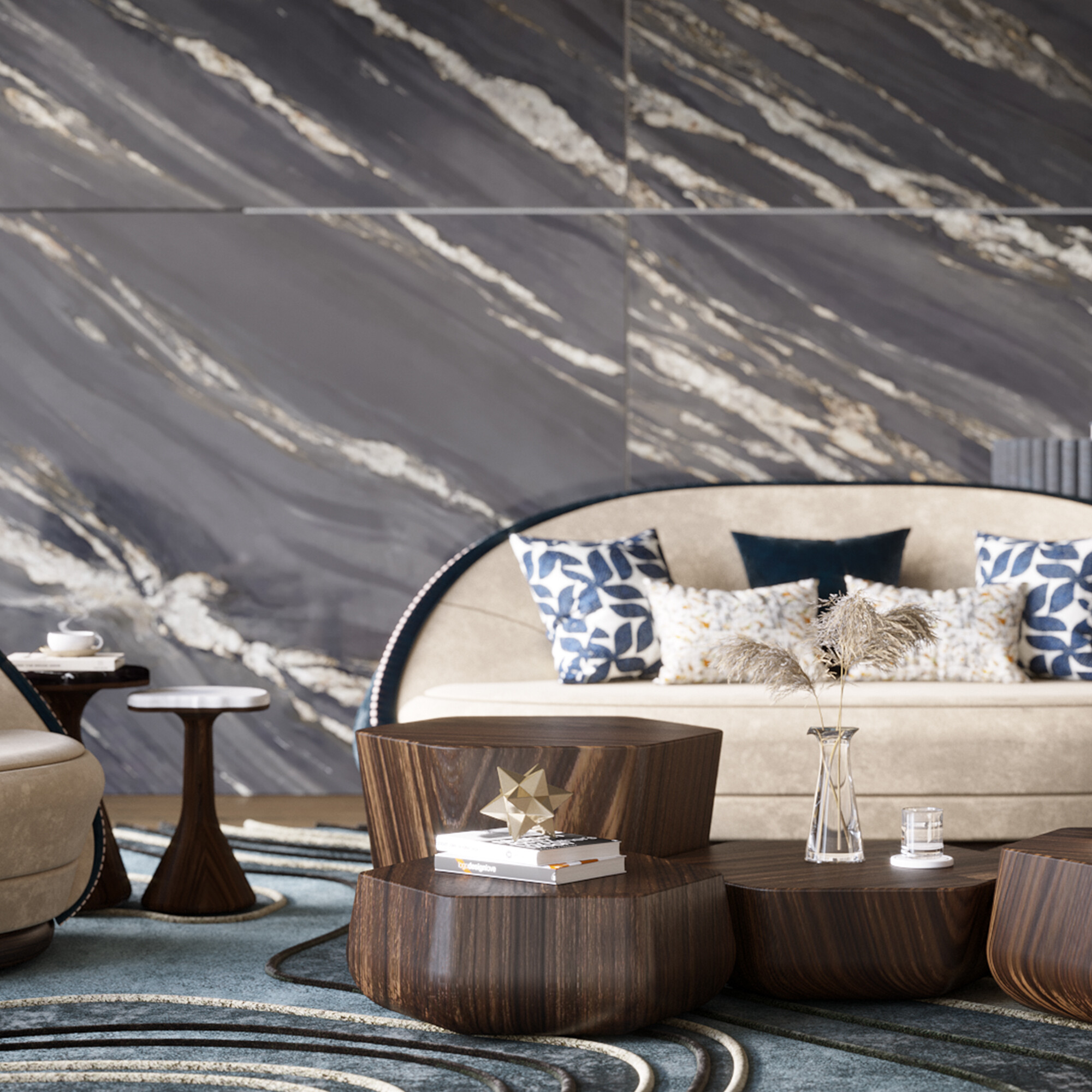
Although taste is not often associated with interior design, it can be integrated subtly to create a complete sensory experience. The design can facilitate tasting and promote a gastronomic experience in kitchens or dining rooms. The presence of fresh herbs, fruits or decorative elements that evoke cuisine can stimulate the appetite and make the area more pleasant.
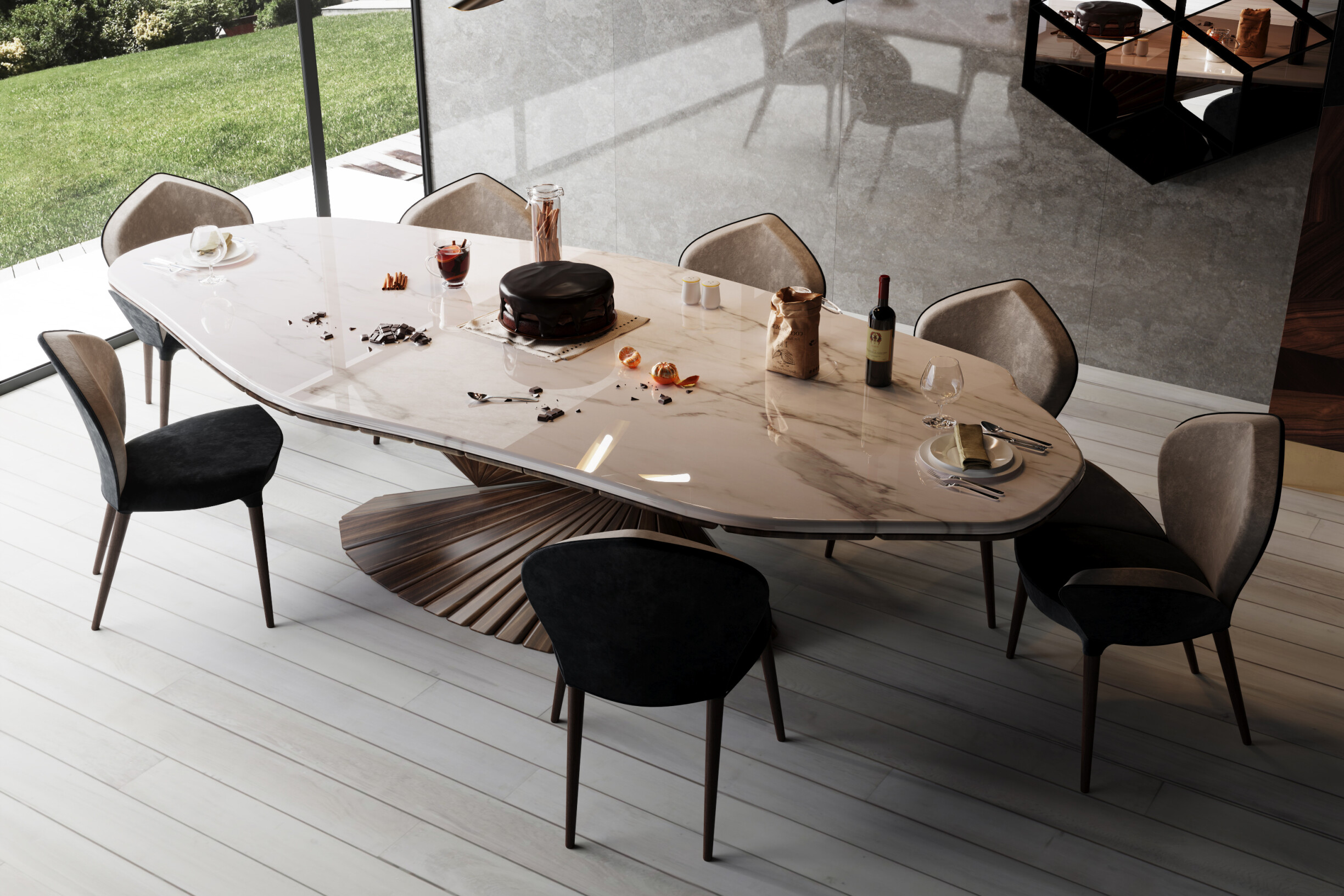
Sensory design can be applied in various ways to enrich the experience of a space's occupants. Here are five practical ways to incorporate sensory stimuli into interior design:
1. Plants and vegetation:
Vision: the green of the plants brings a natural and relaxing touch
Nose: aromas of plants such as lavender or basil add freshness to the room
Touch: contact with leaves and natural textures creates a pleasant tactile sensation.
2. Adaptive lighting
Vision: Lights adjustable in intensity and color temperature transform the atmosphere of any space
Emotions: soft lighting allows you to relax, and more intense lighting improves well-being in workspaces.
3. Natural sounds and ambient music
Listening: Soothing sounds, such as running water or birdsong, create a relaxing area
In commercial spaces, ambient music can increase a customer's emotional connection with the brand.
4. Textures and tactile materials
Touch: pleasant surfaces, such as soft fabrics or polished wood, invite you to touch
Variety: the combination of different materials enriches the sensorial experience of a space.
5. Flavoring
Smell: using fragrances, such as fresh flowers or essential oils
Emotional memory: there are specific aromas that create an emotional bond with the space.
By integrating elements that stimulate all our senses, we can create spaces that not only delight the eyes but also touch people's emotions and well-being. By applying the tips we've explored, you can transform a simple space into a memorable place full of life and sensations. Don't underestimate the power of a space that engages all the senses—try it and see the difference it makes!
Are you ready to start implementing design sensorial in your projects? See some inspirations on Alma de Luce's Pinterest that best suit your needs, your tastes, or your client's desires. Once you're inspired, want some help getting started? Contact us here.😉
Also, did you know that we regularly update our blog to bring you all the news and content about interior design, interior architecture, and decoration? Just be aware!